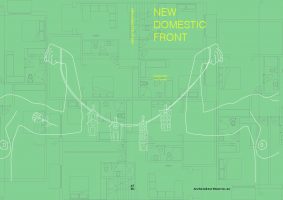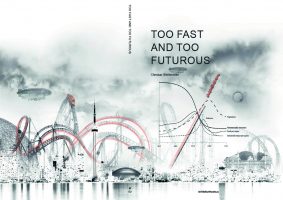
Urban Optimisms / Lisa-Katharina Brunner & Katharina Mayr
The megastructures envisioned in the 1950s and 60s were solutions to the problems the world faced around this period. There was an immense need for housing after the Second World War and at the same time an enormous growth of population. The conventional methods of city planning were not considered as being able to cope […]

Rebelling Furniture / Johanna Babel & Verena Santer
Rebelling Furniture is a book about the avant-garde history of interior design, showing up different approaches to change the traditional design techniques during the time of the 1960s until the end of the 1970s. Due to cultural and political changes designers saw the necessity to change the world of interior design by creating new types […]

A History of the Avant-Garde and History / Daniel Ayad
The notion of the avant-garde is always associated with a cultural manifestation that is ahead of it time, one whose contemporary context is left to wallow in its dust. An assumed outcome of such a definition, and one that is taken for granted, is that the avant-garde is always forward-looking, not concerning itself with the […]

New Domestic Front / Svetlana Ster & Ana Paisana
Ever-Changing Society A revolution is an event that changes the world, countries, society and, above all, changes each one of us. It is something that must be taken seriously. It is a protest of a whole society revolted, on a large scale. Throughout the evolution of the world, there have been many events which we […]

Wanderlust / Christine Gasser & Nina Rattensperger
NOMADISM a rootless, nondomestic, and roving lifestyle.(http://www.thefreedictionary.com/nomadism) This research deals with nomadism, the nomad himself but, as it is about avant-garde architecture, in particular with the nomadic territory. The starting point will be a short introduction why we see nomadism as a main point in avant-garde practices and what the nomad as figure symbolized for […]

Too fast and too futurous / Christian Weittenhiller
„Avant-Gardists are people that don‘t know where they want to go, but they are the first ones there.“ (Roman Gard, french writer) The avant-garde. A global chapter in art and a difficult one. To define a general theory that covers the totality of the phenomenon is close to impossible. And many considerable theorists struggle to […]

Cybernetics: An ever changing Continuum / Julia Farolini & Theresa Mörtl
Since the world war II and the rise of the machines, cybernetics often varied from utopian to dystopian visions regarding its historical context. Nowadays even the thought of an everyday life renouncing the support of technology appears to be impossible if not actually the worst-case scenario for most of our modern society. Irrelevant which spheres […]





